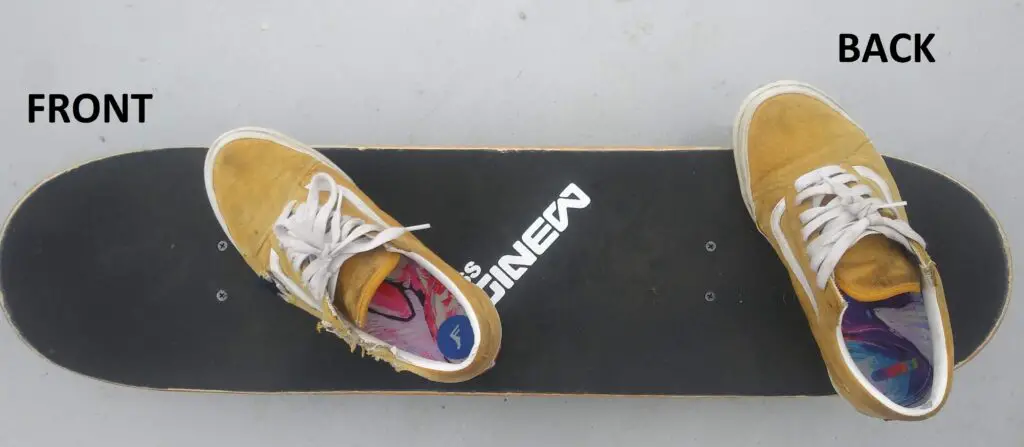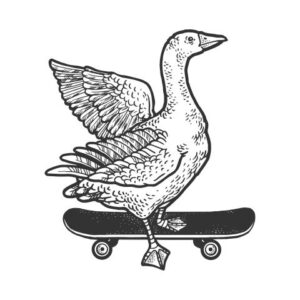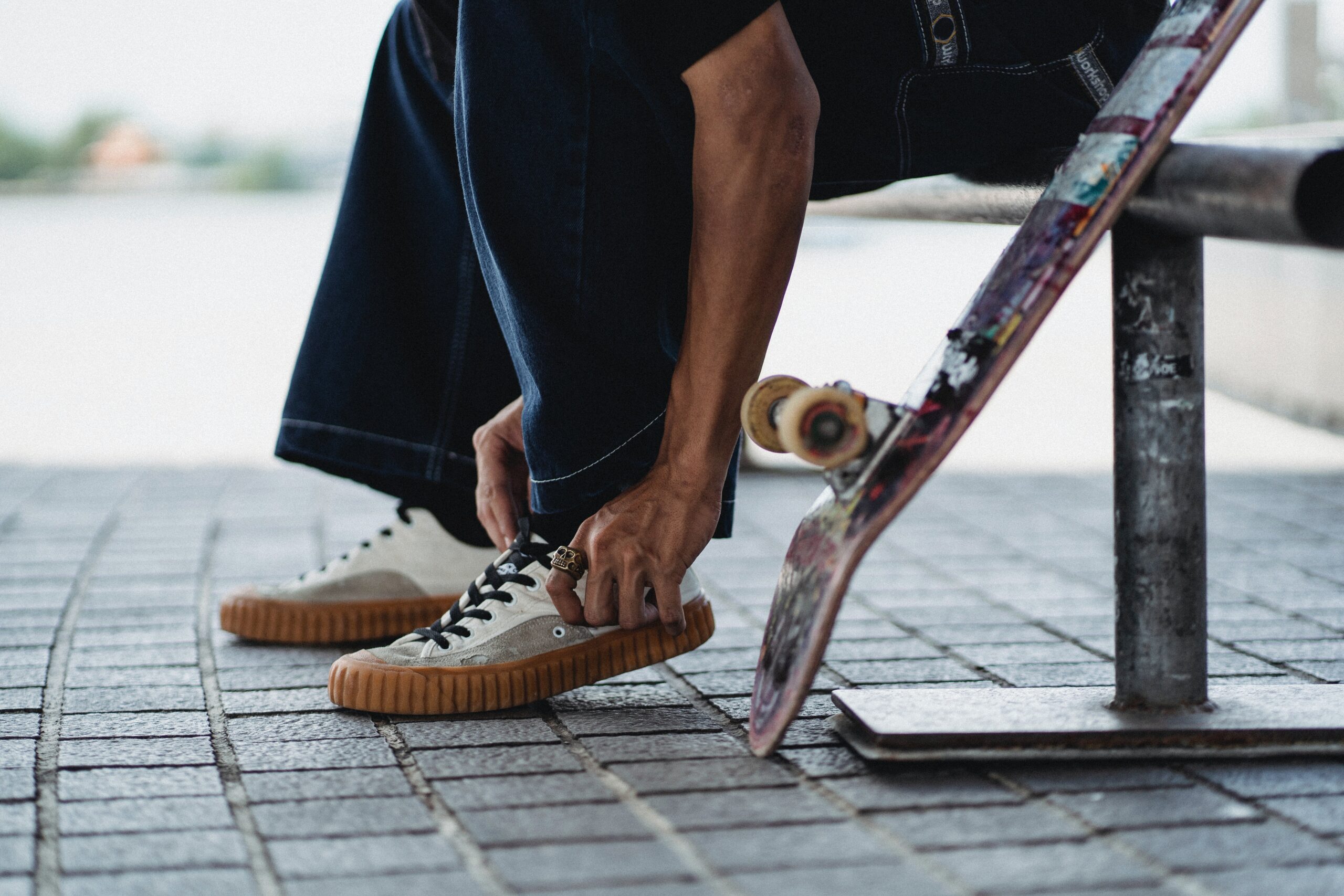It’s easy to get started riding a skateboard, but can takes months to learn tricks. This guide will help you get out there cruising around and riding your skateboard in just a few simple steps.
What Do You Need To Skateboard?
There are some essentials required to skateboard. Before you can hop on a board, you’ll need to have these.
To start skateboarding you will need a complete skateboard, skate shoes, and a helmet. Other protective gears such as wrist guards, knee pads, and elbow pads are highly encouraged for a beginner as you will fall often early on. The total estimated cost for a skateboard, shoes, and safety gear is about $200.
Skate Shoes
Skate shoes are shoes that are closed-toed and have flat soles, thick uppers, and padded soles. There are loads of popular brands that sell skate shoes such as Adidas, Nike SB, and Vans. You might even already have a pair of skate shoes because many non-skaters wear them casually.
You need a skate shoe to skateboard because otherwise you will not be able to properly grip and control your board and your ankle with be scrapped when you begin learning tricks.
If you want a complete guide on what is a skate shoe with cost and brand info, then check out my guide here.
A Complete Skateboard
If you are a beginner you should not build a custom skateboard, but instead just buy a complete. A complete skateboard, as the name suggests, is a skateboard that is preassembled with all the necessary parts. Buying a complete is usually cheaper than buying individual parts for a custom board.
If you want to see a complete guide on the cost of a complete or custom skateboard with brand info, check out my full guide here.
A Helmet and Other Protective Gear
As a beginner, you will need some protective gear. At the absolute least, you will need a helmet. Breaking a bone won’t kill you, but hitting your head might.
If you are not naturally athletic or are heavier, then I strongly recommend wrist guards, knee pads, and elbow pads as well. You are going to be falling onto concrete while learning to skate and you don’t want to snap your wrist or fracture your elbow.
Once you become more comfortable on your board, then knee and elbow pads become less necessary. Especially once you learn how to properly bail and fall, you’ll very likely almost never fall on your elbows or knees again. Unfortunately, as a beginner, you should protect yourself.
The good news is that these are a one-time purchase and you’ll likely never replace your pads and helmet.
If you want a more detailed breakdown of protective gear with costs and sizing charts, check out my full guide here.
ACTION STEP: Go Purchase a skateboard, shoes, and helmet from your local skate shop or order it from an online retailer such as Amazon.
How to Ride a Skateboard
There are some basics you need to know to get started. This happens before you learn your first trick. These skills are necessary to simply ride around on your board.
1. How to Stand on Your Skateboard
Your dominant foot should be used to push and will be placed towards the back of your board.
Standing on your skateboard can be a matter of choice, but there is a popular choice. I recommend the popular choice where your front foot (your non-dominant foot) is placed so your toes are above the front axle.

Your back, dominant foot will come onto the board above the back axle or slightly behind it. Your front foot will be positioned to face forward or at a 45-degree angle over the front axle. The axles are marked by the 4 screws that hold them into place.
Practice just stepping onto your board until it’s easy to do. This could mean two minutes of practice or an hour of practice for others. You should be able to tell when you are comfortable enough to move on.
ACTION STEP: Practice stepping onto your board and staying on even if it moves forward a bit. Feel free to hold onto something at first as you step on if you struggle with balance.
2. How to Push Off
Pushing off refers to using your back foot to push your skateboard forward.
With your front, non-dominant foot placed above the front axle, you will use your dominant foot to push off of the concrete. This will propel you forward.
This can be tricky because if you lean too far to the right or left then you will begin to turn. Your foot needs to be centered on the board and beginners have a hard time finding the center at first.
Your front foot will be positioned to face forward or at a 45-degree angle while you push but will transition to being perpendicular to the board direction once both feet are on the board and you’re really moving. Watch my gif below and see my front foot to see this.
Practice the push off until it is second nature to you and you can reliably go straight forward. This will likely take some time. At least practice this for ten to twenty minutes before moving onto the next step
ACTION STEP: Practice giving yourself one push forward and bringing your back foot onto the skateboard.
3. How to Turn
After you can stand on your board and push off, then it’s time to learn to turn. This is relatively easy to learn, but hard to control. You likely have already been accidentally turning your board as your balance might not be very good as a beginner.
Turning all comes down to shifting your body weight in the direction you want to turn, and then recentering yourself after the turn. This is the next crucial step in learning to skateboard. If you can’t turn, then you can’t ride a skateboard.
Shifting your weight can be hard to do for some. You will need to shift your center of gravity just enough to execute the turn and then reposition yourself back to the center of the board.
ACTION STEP: Practice turning and controlling your turn for the next 30 minutes. Incorporate pushing into this practice as needed.
4. How to Stop
The best way to stop on a longboard is by dragging your back foot flat on the ground. This is actually quite tricky because you can’t just slam your foot down.
To drag your foot you need to have just enough contact to slow down, but not catch your foot and stop abruptly and suddenly. This results in a balancing act as you hang your foot just right off the board so it drags the pavement. You can’t just slam your foot down to stop because at high speeds stopping abruptly can cause injuries.
If you are using a street-style skateboard (a popsicle board), then you can simply shift your weight onto the back tail of your board. This will slam the tail of your board into the ground and it will drag along the pavement until you come to a complete stop. I rarely stop this way and prefer dragging my foot.
Note that slowing down is simply dragging your foot enough to slow yourself down, but lifting your foot back up before you completely stop.
Make sure you know how to stop and slow down before you start going fast. There is no quicker way to hurt yourself than to not know how to stop properly.
ACTION STEP: Practice dragging your foot to come to a stop. This can take a while to learn well, but give yourself at least 20 minutes of practice for each of your early skate sessions.
5. How to Fall
Learning how to fall is critical to your safety while riding a skateboard. The movements needed to fall correctly are natural to some, but not so intuitive to others. The gist is that you want to avoid falling onto your arms and hands and you want to spread out the impact of your fall. You can achieve this by rolling it out.
You need to learn and practice this with repetition. This is because you will fall at some point. Don’t worry about looking ridiculous practicing this. You’re an adult. Safety is more important than looking cool.
If you have turned so that you are falling backward, make sure you keep your head up and just fall and slide on your butt.
The most important thing is to not land on your arms or hands and to fall with your momentum which means forwards. This may seem more dangerous, but trying to catch yourself and leaning back leads to much harder slams and a higher risk of injury.
Sometimes you can fall smoothly and you will slam hard. This is unavoidable.
Just practice falling with your momentum and be aware of your head and arms/hands.
ACTION STEP: Practice riding up to grass and falling into the grass or practice falling on a harder surface if you have wrist guards.
If you want more details on how to properly fall while skateboarding, check out my in-depth guide on how to safely fall while skateboarding here.
6. How to Get Comfortable On Your Skateboard
The last critical step is learning to get comfortable on your board. This is a simple step to complete, but it takes quite a long time. You will need to put in the hours to become comfortable on your board and realistically it can take months.
The trick is to simply ride your board everywhere. Ride it to school, cruise around the park, or ride around every morning for a month.
I have another set-up that is a skateboard with longboard wheels and I like to cruise around with my friend and explore the city. We usually have a beer and then lunch or dinner after we cruise for an hour or two. I sometimes practice riding switch during this time.
The point is to just spend time on your board pushing, turning, slowing down, and stopping.
ACTION STEP: Go skateboarding 3 times a week for the next month. Take a video on the first day and the last day to compare how you’ve improved.
Learning Tricks
Most people who skate want to learn some tricks. However, this should not be your focus the first month or two of your skating. Learning to do tricks when you’re not yet comfortable on your board is like trying to learn to run before you can walk.
Still, you can start to practice the basic motion of an ollie or manual while you get comfortable on your board. Just don’t make it your focus.
I won’t go into specifics about learning to ollie or do other tricks, because that will require a completely different guide, but my advice is to start slow. Beginners don’t realize how difficult skateboarding is and how complex even something like an ollie is. Most skateboarders take at least a month to learn an ollie and 40% of new skaters take three months or more to learn it.
Skateboarding is very difficult and it will take a long time before you feel comfortable and can do tricks. So please, be patient. So many people give up when they realize how difficult it truly is. Go slowly and don’t be one of those people.
ACTION STEP: Spend the last 10 or 15 minutes of your skate sessions to try and learn a simple trick. Good beginner tricks include the kickturn, the manual, and the ollie. Do not focus on learning tricks in your first couple months of skating.
Conclusion
Learning to skateboard is not easy. It is challenging and you will likely fall more than a few times. However, though it is difficult, skateboarding can be extremely rewarding when you learn to control your board.
This guide will get you started, but to really progress you need to skate often and practice often. Really, it takes months to learn an ollie for 40% of new skaters and then even longer to land it consistently. Skateboarding is a marathon, not a sprint so be patient.
Try and follow these steps in order and you’ll be out there riding in just a day or two. These basics of pushing, stopping, turning, and falling are easy to learn, but you do need to take the time to learn these motions.
Anyway, thanks for reading, and look out for more content from Board and Wheels.






